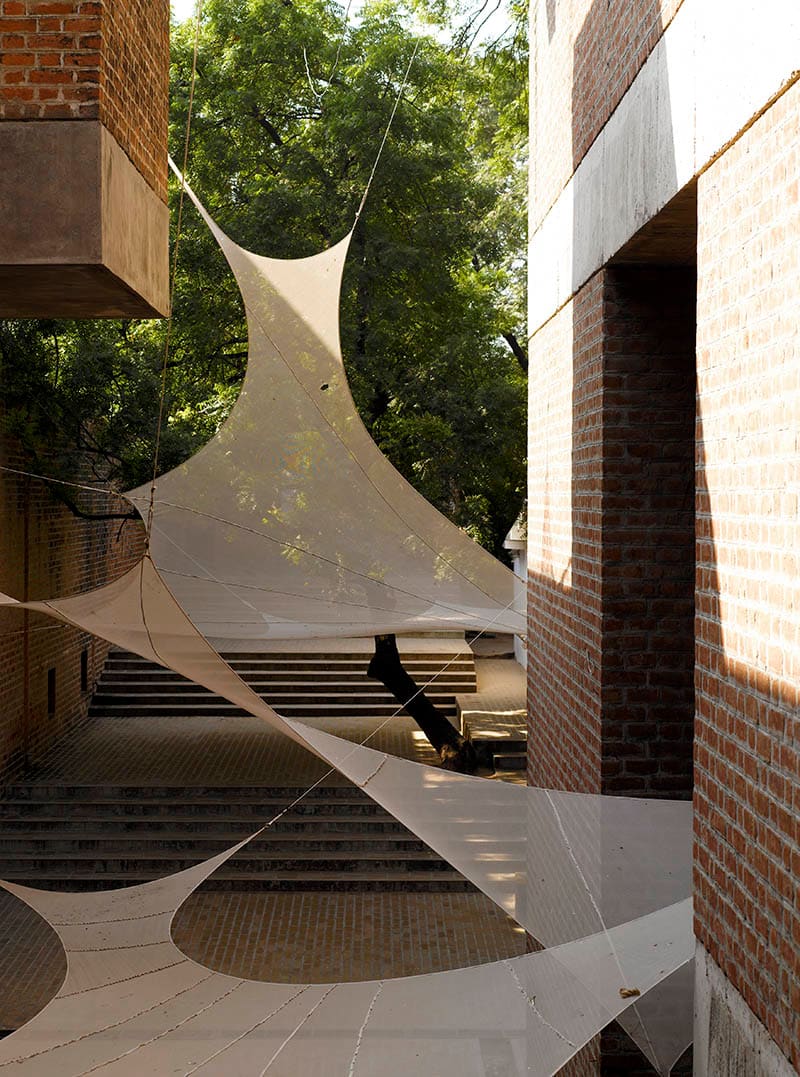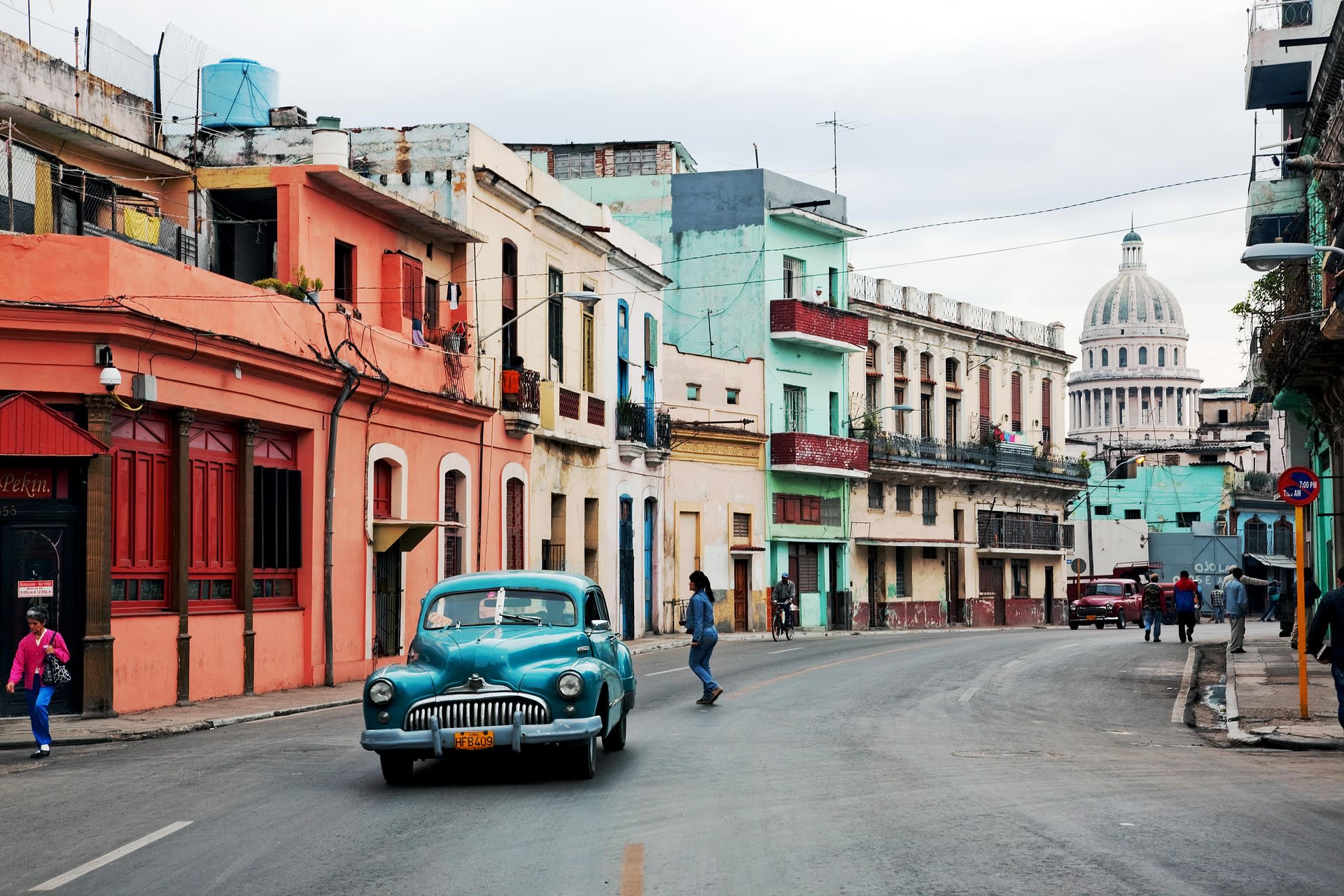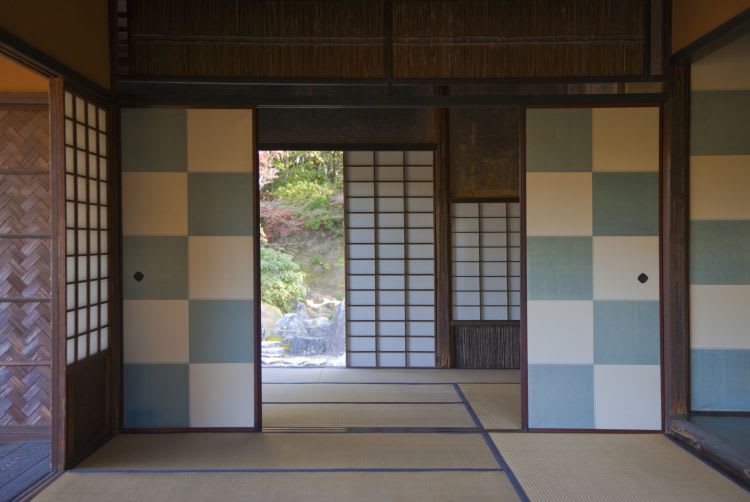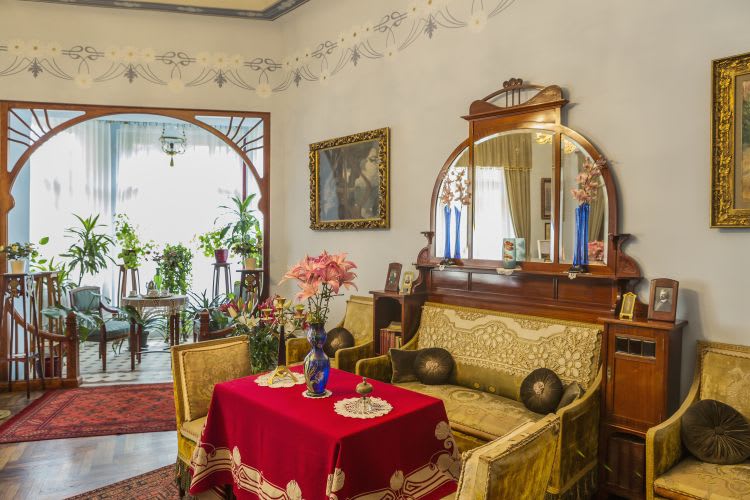


Are you sure you want to reset the form?
Your mail has been sent successfully
Are you sure you want to remove the alert?
Your session is about to expire! You will be logged out in
Do you wish to stay logged in?
Please note that you will need to be logged in to view the content featured below

India’s independence from British colonial rule in 1947 marked not only the emergence of a new nation but also the beginning of a new post-imperial world order. This moment is the hinge on which India views its history: as a civilization, a culture, a society, and a nation. It also brought to light a binary perspective on India’s history, economics and culture: the struggle and symbiosis between tradition and modernity.
Two architects in particular who pioneered and laid the groundwork for Modernism in newly independent India were Habib Rahman and Achyut Kanvinde, while two non-Indian architects created the nation’s first thoroughly Modernist building: the Golconde Ashram in Pondicherry (today’s Puducherry), by Antonin Raymond and George Nakashima. By the 1960s and 70s a newly confident indigenous generation of architects was coming to the fore. Charles Correa, B.V. Doshi, and Raj Rewal, among many others, were involved in their own manner in the search for identity, engaging with distinct regional features and moving away from the homogenizing effects of ‘International Style’ Modernism.
Architects experimented with the expression of material and technology as rooted in a local context, for example in the brickwork of the Belgian Embassy in New Delhi by Satish and Mohit Gujral, of 1984 and later in 1990 in the Mati Ghar in New Delhi, by Sanjay Prakash, and the rough-hewn rock and bamboo of the Mallik House by Nari Gandhi. Today, younger Indian studios have taken over the definition of and discourse on what Indian architecture will be, responding in fresh ways to long-embedded tensions between traditional and modern, urban and rural, local and global.
You can discover a wealth of further information about these themes by exploring the Bloomsbury Architecture Library – ranging from a full history of modern Indian architecture, to global case studies in design inspired by traditional practice.

Was COP27 a success or a failure? We are yet to see whether the assembled world leaders of the 27th United Nations Climate Change conference will be able to effect any meaningful long-term change – securing global net zero carbon by 2050, keeping 1.5°C within reach, and bringing climate change under control. One thing that is certain, however, is that – with the built environment currently contributing 38% of worldwide energy-related carbon emissions – architects are on the frontline of global climate action.
Our Architecture Design and Practice collection contains a wealth of professional knowledge covering both the importance of sustainability and green design as well as practical information on how sustainability can be implemented in architecture.
Discover how design can create a positive legacy through regenerative sustainability; learn how to influence policy and behaviour through representation; get the low-down on designing an ecohouse; create a net-zero energy neighbourhood; or read the case study on Steven Holl’s Sliced Porosity Block – an urban terrace on a metropolitan scale.
All this and more can be found in the Architecture Design & Practice Online collection with over 200 key titles focusing on studio design and professional practice – from sustainability through to historic preservation.

If colonialism was the dominant narrative of Africa’s experiences from the late nineteenth century, then independence and post-colonialism was the story of the twentieth, as a wave of popular resistance brought about the liberation of hundreds of millions of people from colonialism and saw the creation of dozens of new countries. The architecture of African independence was characterized by optimism and creative adaptations of Modernism. From the Fiat Tagliero in Asmara, to the Accra National Museum, to the Wakulima Market in Nairobi, Modernist architects found a willing patron in African independence and Modernism dominated the aesthetics of the era.
For many nations, the honeymoon ended in the 1970s, when either political turmoil or overexposure to global markets stalled development or, worse still, plunged entire nations into economic decline. Today however, Africa and the perceptions about the continent have changed dramatically. Some of the highest rates of investment in the world, combined with rapid urbanization have seen the fostering of local and globalised talents – including Diébédo Francis Kéré and Urko Sánchez Architects – and are ensuring that architecture is once again being enlisted as one of the principal mechanisms for achieving the aspirations of the continent’s fifty-four countries.

Get lost in the labyrinthine Red Room in Twin Peaks, unsettle yourself in Mulholland Drive’s Club Silencio, or explore the climactic alley scene in Inland Empire… Highlighting the value of interdisciplinary perspectives in architectural studies, The Architecture of David Lynch examines the relationship between architecture and cinema via the extraordinary spaces and settings of David Lynch’s films. In analyzing the towns, cities, homes, roads and stages found in Lynch’s work, this book not only reveals their central importance for understanding this controversial and distinctive film-maker, but also suggests how Lynch’s films can provide a deeper understanding of the places and spaces in which we live.

How is global architectural history defined? Bloomsbury Architecture Library provides a diverse and global range of perspectives on architectural history. Among hundreds of in-depth chapters and entries on the world’s architectural history, read about shadows in the Middle East, shopping centre development in Finland, or the ceremonial architecture used by the seventeenth-century local magistrate in China – and explore our visual timeline of global architectural history.

Architecture after 1900 in Asia-Pacific was influenced by a great many interrelated factors, two of the most important being decolonization and the struggle for independence and new developments in building materials.
Newly available construction materials in the 20th century led to new architectural developments and movements throughout the region. Reinforced concrete enabled longer spans and larger internal volumes, such as the Central Market in Phnom Penh Cambodia created in the mid-1930s as an alternative to the traditional street-based market.
Concrete became associated with the embrace of Modernism generally across southeastern Asia. Buildings with giant concrete roofs and brises-soleil (sun shades) like the Parliament House, Kuala Lumpur, Malaysia (1957–63) were signatures of independence and emerging regional identities. It was a post-war design approach that is generally called ‘Tropical Modernism’, representing the adaptation of Western forms of modern architecture to suit the climate and formal language of the region.
By the 1960s, such tensions between internationalism and local identity were frequently being played out through architecture. Many buildings combined modern elements with vernacular references. The Chapel of Futuna blends European architecture with elements of traditional Māori meeting houses; the San Miguel Corporation Headquarters in Manila echoes the rice terraces of the central Cordillera of the Philippines; while anthropologist Alban Bensa and Italian architect Renzo Piano designed the Jean-Marie Tjibaou Cultural Centre on the Tinu Peninsula outside Nouméa to look like the traditional “Great Hut” of Kanak chiefs.

In The Japanese House, Inge Daniels takes the reader behind the doors of real Japanese homes to find out how highly private domestic lives are lived in Japan. Long before Marie Kondo, ‘stuff and storage’ have played a central role in Japanese home ownership and expansion, with storage a primary concern for many home buyers. The opposite of clutter, tatami rooms offer spacious, sparsely furnished rooms with a decorative alcove, while, for a defining Japanese home aesthetic, Daniels identifies what she calls an ‘eclectic aesthetic’ a blend of liked and disliked objects, souvenirs, handmade items, and gifts – arguably far from idealized Western notions of the house and home in Japan.

How is the interior defined and how has the perception of the interior changed over time? From the French dream bedroom, to paradise in the parlor, and the warm workshop kitchenscape, take a tour of how our interpretations of different rooms have varied in the modern era. Further, does today’s retro style culture represent an uncoupling of the relationship between class and taste? Keep reading to decide for yourself. And for an overview of the many ways in which critical theory and philosophy can inform the design of interior space, step into interior design criticism from the Handbook of Interior Architecture and Design.